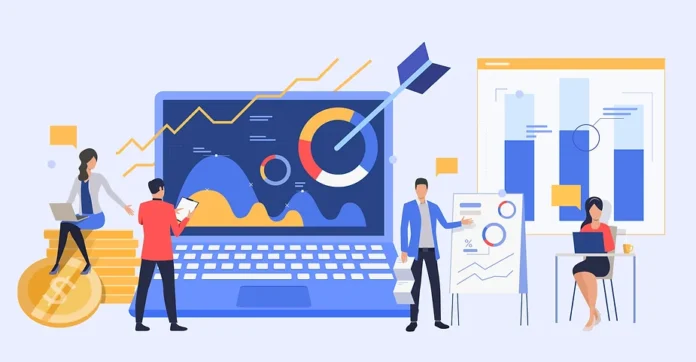Banking on accuracy has never been more crucial in today’s fast-paced business landscape. One costly oversight, one missed transaction, and the ripple effects can be devastating. That’s where reconciliation software emerges as a game-changing solution, revolutionizing the way businesses manage their books. By automating the traditionally manual and error-prone reconciliation process, this powerful technology streamlines data management while fortifying the integrity of financial records.
Read on to learn how reconciliation software can transform your business’s financial operations.
What is the Reconciliation Process, and Why Use Software?
Reconciliation is the process of comparing two sets of records to ensure they match and are accurate. In business, this typically involves matching internal financial records, like accounting entries or ledgers, with external sources of data like bank statements, credit card transactions, and vendor invoices.
Reconciliation is crucial because it helps:
-
Identify errors or discrepancies in financial data
-
Detect fraudulent activities or un-authorized transactions
-
Ensure compliance with accounting standards and regulations
-
Provide an accurate picture of a company’s financial standing
Traditionally, reconciliation has been a manual, labor-intensive process performed by accountants. They would pore over records line-by-line, cross-checking numbers across different sources. This is extremely time-consuming, prone to human error, and inefficient.
This is why businesses need reconciliation software. With reconciliation software, the process becomes streamlined, accurate, and efficient. It saves time, reduces errors, improves data quality, and allows staff to focus on higher-value tasks instead of tedious reconciliation work.
In a nutshell, reconciliation software modernizes this critical process through automation for better insights and control over financial health.
Features offered by the Reconciliation Software
Reconciliation software typically offers a comprehensive set of features to streamline and optimize the reconciliation process. Here are some of the key features offered by most reconciliation software solutions:
Feature |
Description |
|
Automated Data Import |
Ability to automatically import financial data from various sources like bank statements, credit card statements, and accounting systems to eliminate manual data entry. |
|
Transaction Matching |
Advanced algorithms and rules to automatically match transactions from different sources, such as bank statements and general ledger entries, reducing manual effort and errors. |
|
Rule-Based Reconciliation |
Users can define rules and criteria for reconciliation, allowing the software to automatically reconcile transactions based on predefined rules, providing flexibility and customization. |
|
Exception Management |
Identification of exceptions or discrepancies during reconciliation, such as unmatched transactions, duplicates, or errors, for review and manual intervention. |
|
Reconciliation Workflow |
Workflow management capabilities, including task assignment, approvals, and notifications, ensuring proper oversight and accountability. |
|
Reporting and Analytics |
Comprehensive reporting and analytical tools for generating reconciliation reports, tracking KPIs, and gaining insights into reconciliation processes and trends. |
|
Audit Trail and Documentation |
Detailed audit trails and documentation of all reconciliation activities, including user actions, timestamps, and supporting documentation for compliance and auditing purposes. |
|
Integration with Other Systems |
Integration capabilities with accounting software, ERP systems, and other financial applications for data consistency and streamlined financial management. |
|
Security and Access Controls |
Robust security features, such as user authentication, role-based access controls, and data encryption, to protect sensitive financial data and maintain confidentiality. |
|
Scalability and Flexibility |
Ability to handle increasing transaction volumes and adapt to changing business requirements or regulatory changes. |
These features are designed to enhance the efficiency, accuracy, and control of the reconciliation process, ultimately contributing to better financial management and decision-making within organizations
When is the Right Time to Use Account Reconciliation Software?
Account reconciliation software can be a valuable tool for businesses and organizations to streamline their financial processes, ensure accuracy, and gain better visibility into their financial data. Here are some common scenarios where using account reconciliation software can be beneficial:
-
High transaction volume:
If your business deals with a large number of transactions across multiple accounts, manually reconciling those accounts can be time-consuming and prone to errors. Account reconciliation software can automate the process, saving time and increasing accuracy.
-
Multiple bank accounts or financial institutions:
Managing and reconciling transactions across multiple bank accounts or financial institutions can be challenging. Account reconciliation software can consolidate data from various sources, making it easier to reconcile accounts and identify discrepancies.
-
Complex reconciliation processes:
Some industries or business operations may have complex reconciliation requirements, such as reconciling intercompany transactions, reconciling accounts with third-party data sources, or handling specific accounting rules or regulations. Account reconciliation software can help streamline these complex processes and ensure compliance.
-
Desire for better financial controls and oversight:
Account reconciliation software can provide better visibility into financial data, enabling better financial controls, auditing capabilities, and oversight. This can be particularly important for businesses that need to comply with regulatory requirements or maintain strict internal controls.
-
Need for timely reporting:
Manual account reconciliation processes can be time-consuming, making it difficult to generate timely financial reports. Account reconciliation software can automate the reconciliation process, allowing for more frequent and up-to-date reporting.
-
Scaling for growth:
As businesses grow, their financial operations tend to become more complex, with more accounts and transactions to manage. Account reconciliation software can help businesses scale their financial processes more efficiently, ensuring they can handle increased transaction volumes and complexity without overburdening their finance teams.
Account reconciliation software might not be needed for small businesses with straightforward finances and few transactions. Yet, as businesses expand and operations become more intricate, using such software offers substantial advantages, including time efficiency, accuracy, and better financial oversight.
What are Some Popular Reconciliation Software Options?
Here are 10 popular reconciliation software options, along with their features, best use cases, and other relevant details:
BlackLine:
BlackLine is a comprehensive financial automation platform that offers robust reconciliation capabilities.
- Features: Automated account reconciliations, transaction matching, task management, reporting, compliance support.
- Best For: Large enterprises and organizations with complex financial operations.
Trintech Cadency:
Trintech Cadency is a cloud-based reconciliation solution that offers automated reconciliation processes, risk management, and compliance support.
- Features: Automated reconciliation processes, risk management, compliance support, matching, certification, exception management.
- Best For: Mid-sized to large organizations across various industries.
ReconArt:
ReconArt is a web-based reconciliation software that automates the entire reconciliation process, from data ingestion to certification.
- Features: Automated reconciliation process, transaction matching, workflow management, comprehensive reporting.
- Best For: Banks, insurance companies, and other financial institutions.
Adra Matcher:
Adra Matcher is a reconciliation tool that focuses on automating the matching and reconciliation of transactions.
- Features: Automated transaction matching and reconciliation, fuzzy matching, data mapping, exception management.
- Best For: Organizations with high transaction volumes.
Xero:
Xero is a cloud-based accounting software that includes reconciliation capabilities.
- Features: Bank reconciliation, matching and reconciling transactions from multiple bank accounts.
- Best For: Small to medium-sized businesses.
Oracle Reconciliation Compliance:
Oracle Reconciliation Compliance is part of the Oracle Financial Services Analytical Applications suite.
- Features: Automated reconciliation processes, regulatory compliance support, risk management.
- Best For: Financial institutions and large enterprises.
SmartStream TLM OnRec:
SmartStream TLM OnRec is a reconciliation solution that offers automation, exception management, and reporting capabilities.
- Features: Automation, exception management, reporting capabilities.
- Best For: Financial institutions, asset managers, and corporations with complex reconciliation requirements.
SurePrep TrustBooks:
SurePrep TrustBooks is a reconciliation software specifically designed for trust accounting and law firms.
- Features: Automated reconciliation for trust accounts, client ledgers, and bank accounts, compliance with legal and regulatory requirements.
- Best For: Trust accounting and law firms.
SkyStem ART:
SkyStem ART is a cloud-based reconciliation and financial close management solution.
- Features: Automated reconciliations, transaction matching, exception management, financial close management.
- Best For: Organizations of various sizes across multiple industries.
Fiserv Accurate Reconciliation:
Fiserv Accurate Reconciliation is a reconciliation solution designed for financial institutions.
- Features: Automated reconciliation for various account types, exception management, reporting capabilities.
- Best For: Financial institutions.
Each of these reconciliation software options offers unique features and capabilities tailored to specific industry needs and organizational requirements.
How to Select the Best Account Reconciliation Software for your Business?
Selecting the right account reconciliation software for your business is crucial for streamlining financial processes, ensuring accuracy, and saving time. Here are 10 steps to help you choose the best account reconciliation software:
-
Define your requirements:
Assess your business needs, such as the number of accounts, transaction volumes, and the complexity of your reconciliation processes. This will help you determine the features you require in the software.
-
Consider integration:
Look for software that seamlessly integrates with your existing accounting systems, ERPs, and other relevant applications to avoid data entry duplication and ensure a smooth flow of information.
-
Evaluate automation capabilities:
Prioritize software that offers advanced automation features, such as automatic data import, rule-based reconciliation, and exception handling, to minimize manual effort and reduce errors.
-
Scalability:
Choose software that can grow with your business, accommodating increasing transaction volumes and additional accounts without compromising performance.
-
User-friendliness:
Opt for software with an intuitive interface and easy-to-use features, as this will facilitate user adoption and minimize training requirements.
-
Reporting and auditing:
Ensure the software provides comprehensive reporting capabilities, including customizable reports, audit trails, and compliance features to meet regulatory requirements.
-
Security and data protection:
Prioritize software that offers robust security features, such as role-based access controls, data encryption, and secure backups, to safeguard your financial data.
-
Customer support and training:
Evaluate the vendor’s customer support offerings, including training resources, documentation, and responsive technical assistance.
-
Pricing and deployment options:
Consider the software’s pricing structure (perpetual licensing, subscription-based, or pay-per-use) and deployment options (on-premises, cloud-based, or hybrid) to align with your budget and IT infrastructure.
-
Vendor reputation and reviews:
Research the vendor’s reputation, read customer reviews, and seek recommendations from industry peers or consultants to ensure you choose a reliable and reputable solution.
By following these steps, you can make an informed decision and select the best account reconciliation software that meets your business requirements, enhances efficiency, and provides long-term value.

Seek Professional Guidance to Simplify the software Selection Process!
Why go through the hassle of researching and evaluating software yourself? Make your Reconciliation software purchase easier and more enjoyable with STAQ.ai!
Our team of software experts will be your trusted guide, taking the guesswork out of the selection process. We’ll dive deep into your business needs, understand your pain points, and handpick the perfect solution that checks all your boxes—and maybe even a few you didn’t know you had.




